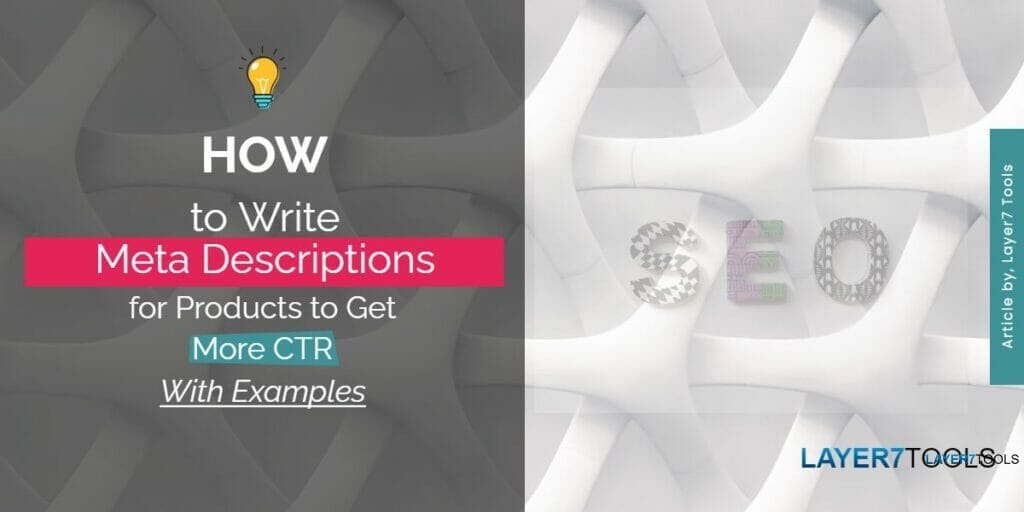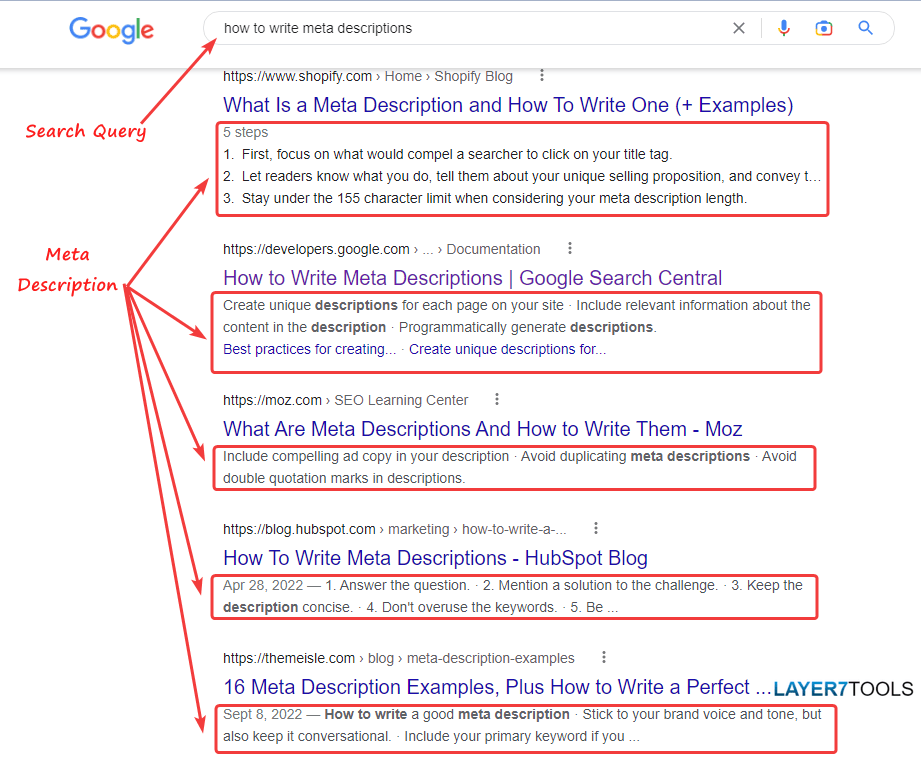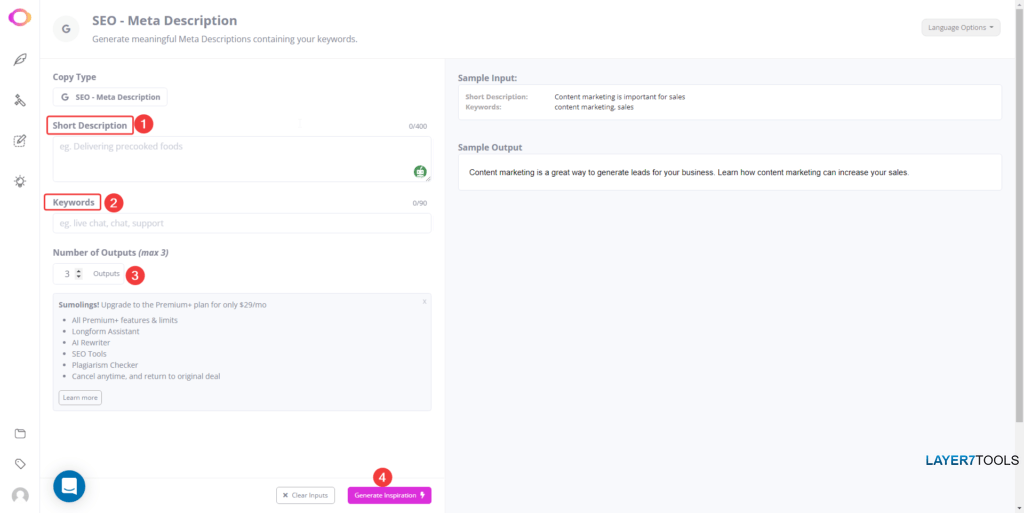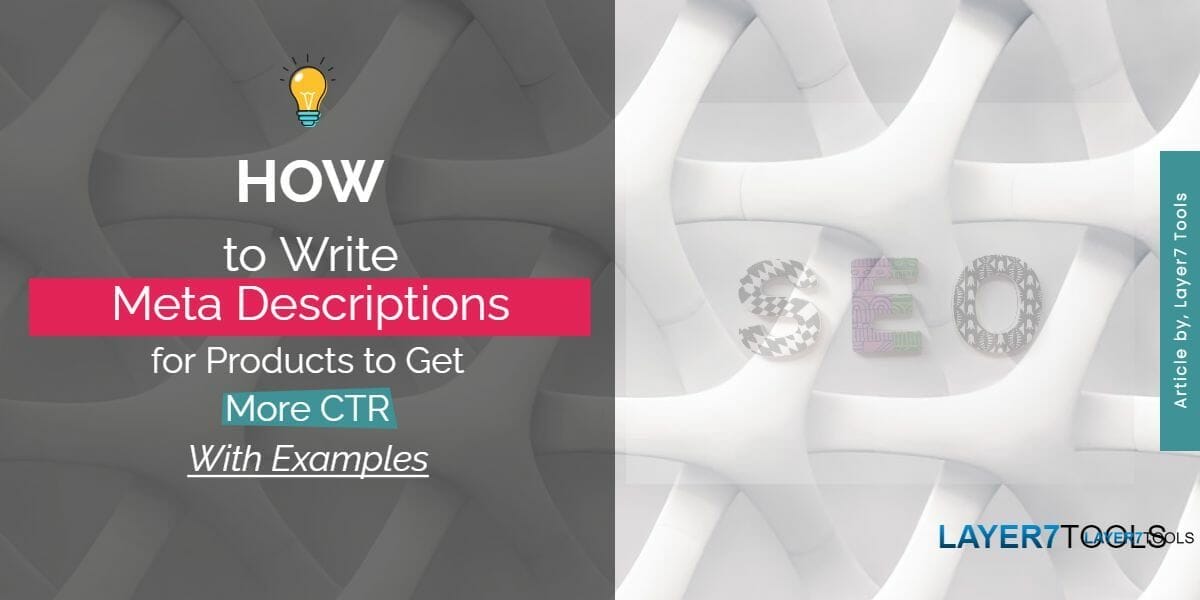- How to Write Meta Descriptions for Products with Examples
- Summary: How to Write Meta Descriptions for More Click-Through Rate
- What is a meta description, and why is it important?
- How to Add Meta Descriptions to your Product Webpage
- How to Write Meta Description for a Product Page
- 1. Meta Description must be unique for each product page
- 2. Keep it short, concise, and under 155-160 characters
- 3. Use Target and Related Keywords
- 4. Include a Call-to-Action
- 5. Use the AI Writing tool to write Meta Descriptions for you.
- Conclusion

How to Write Meta Descriptions for Products with Examples
If you’re looking to increase your click-through rate, one of the best places to start is by writing better meta descriptions. A meta description is a brief text that appears beneath your page’s title on the search engine results page. It’s your chance to give potential visitors a snapshot of your page and entice them to click through. Here are a few tips on how to write meta descriptions for products that will get more clicks:
Summary: How to Write Meta Descriptions for More Click-Through Rate
- Meta Description must be unique for each product Page
- Keep it short, concise, and under 160 characters.
- Use Target and Related Keywords
- Include a call to action.
- Use the AI Writing tool to write Meta Descriptions for you.

What is a meta description, and why is it important?
Meta descriptions are the brief snippets of text that appear underneath your page’s title in the search engine results pages (SERPs).
This section aims to provide users with a concise summary of what the webpage is about so that they can determine whether or not the page is relevant to their search.
Meta descriptions are not a ranking factor for search engines but can influence CTR or click-through rates. This means that if you have a well-written meta description, it is more likely that users will click on your result on the search engine results page, which in turn will increase sales for your e-commerce store.
CTR is also a major indicator of how well a page does in the search engine results page (SERP).
Lastly, a great meta description can differentiate between a user clicking on your site and not.
How to Add Meta Descriptions to your Product Webpage
You might not be able to make direct changes to your HTML if you use a content management system like WordPress, Wix, Shopify, or Blogger. Instead, you can tell search engines about your meta tags through the search settings page or another means provided by your CMS.
For example, if you use WordPress for CMS, use SEO plugins like Squirrly SEO to add Meta Descriptions and Titles to your webpage.
If you want to add a meta tag to your website, look for instructions on how to change the <head> of your page on your Content Management System (for example, search for “Shopify add meta tags”).
Source Google
How to Write Meta Description for a Product Page
You need to write better meta descriptions if you want more people to click through to your website from search engine results pages. It’s your chance to grab potential visitors’ attention and persuade them to click through to your site.
By following these tips, you can write better meta descriptions that will help you increase click-through rates and boost your overall SEO.
1. Meta Description must be unique for each product page
To write a unique meta description, start by making a list of the product’s most important features and benefits. Then, craft a compelling description that includes these elements while incorporating relevant keywords.
Write for your audience first and foremost—focus on what they would be searching for. If a potential customer were searching for “wool gloves,” for example, they’d want to read a description that reads, “These wool gloves keep hands warm and dry.”
2. Keep it short, concise, and under 155-160 characters
- Keep it around 155-160 characters; if it’s longer, search engines like Google and Bing will truncate it.
- If your description is too long and meaningless, users will likely lose interest and move on – so keep it short and sweet.
- Be clear and concise. Tell searchers exactly what they can expect to find from your article. For example, “Learn how to build a website from scratch using free tools” tells users exactly what they’ll find in your article.
- Focus on the benefits. For example, think about what the reader can expect to gain by clicking through to your article or website.
- Avoid using spammy language in meta descriptions. For example, “click here” or “buy now” are unnecessary and spammy sometimes; use them wisely.
- One more trick is to focus on what the experience of purchasing your product or service will be like for the user rather than highlighting what your product can do for shoppers.
- Here are some examples of effective meta-descriptions that reflect this approach:
“This hiking boot has everything an adventure seeker could want: waterproof protection, durable soles, and a cool design.”
The benefits here are clear and concise. Hikers can expect to protect their feet, get waterproof protection, and get a cool design.
“This yoga pant is the ultimate in comfort and flexibility.”
This example shows what users will get out of the experience of wearing pants. First, they’ll be comfortable and able to stretch in these pants.
3. Use Target and Related Keywords
Make sure your meta description is relevant to the page’s content and includes your target keywords if you want people to find your page.
Use keywords to help users locate your material. You’ll get more clicks if you include these keywords in your meta descriptions.
You can find the best keywords to target using a keyword research tool like Spyfu, Semrush, Ahref, Keyword Everywhere, or Google AdWords Keyword Planner.
Use Related Keywords
Include related keywords in your product description, apart from your main keyword, if space (155–160 characters) permits. The more consistent your target and related keywords are throughout your description, the better your click-through rate will be.
To find the related keyword, enter a few seed keywords related to your topic. Semrush, Spyfu, or any other keyword research tool will generate a list of related keywords. Once you have your list of related keywords, you can start incorporating them into your meta descriptions.
For example, suppose you’re writing a meta description for a blog post about how to start a business. In that case, you could include 3-4 relevant keywords such as “business,” “start a business,” “entrepreneurship,” etc., together with one overarching keyword like “how to …..”
4. Include a Call-to-Action
- Write in an active voice and use actionable language. Instead of saying, “click here,” try something like “learn how to improve your meta descriptions for more click-throughs.”
- Include a call to action. Tell the reader what you want them to do, such as “read this article to learn more.”
- Don’t just ask your readers to click without telling them what they’ll find if they do.
- Some examples of actionable and active voice call to action that does not look spammy include:
- “Use this coupon code to get 10% off your purchase.”
- “Sign up for our newsletter to receive exclusive discounts and offers.”
- ” Follow us on social media for the latest news and updates.”
- Learn how to–
- Download our–
- Start using–
5. Use the AI Writing tool to write Meta Descriptions for you.
Use Rytr or Contentbot to write meta descriptions for your product pages.
Rytr Example:-
Follow the below step-by-step method to generate SEO meta descriptions using Rytr.
- Select your language.
- Select your tone.
- Select your use case (SEO Meta Description).
- Write the page Meta Title (your H1) in the box.
- Select the number of variants (leave it to default to 3).
- Select the creativity level (leave it to default to 3)
- Hit “Ryte for me.”

Contentbot Example:-
Follow the below step-by-step method to generate SEO meta descriptions using Contentbot.
- Write a short description or put your SEO meta Title (H1) here.
- Write down the primary and related keywords you want to use.
- Select the number of outputs (leave it to default to 3).
- Hit Generate.

Check out my Rytr and Contentbot review to learn about these awesome AI writing assistants.
Conclusion
In conclusion, to write effective meta descriptions for your products, you must focus on creating short (less than 160 characters), attention-grabbing descriptions that accurately reflect what’s on offer. You also need to ensure that your meta descriptions are full of keywords if you want to appear in the right search results. If you use these tips in your meta description, you should see an increase in both click-throughs and visitors to your product pages.
Reference:-
Google Meta Description Writing Guidelines
https://developers.google.com/search/docs/appearance/snippet
- WPVivid Backup Plugin Review (2023): Backup, Restore, Stage, and Migrate WordPress Sites - March 1, 2023
- How to Write Better Outlines with ChatGPT (Including Prompts) - February 3, 2023
- How to Write good headlines that grab attention and drive conversions - January 27, 2023




